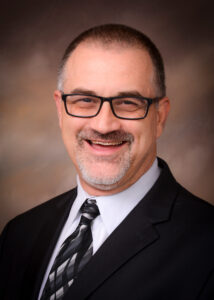 The ABCs of LGBTQIA+ Healthcare
The ABCs of LGBTQIA+ Healthcare
written by Jeffrey Williams, DNP, APRN, CCNS, CCRN, Associate Clinical Professor, Texas Woman’s University
For the LGBTQIA+ community, healthcare can be an uphill battle. Multiple studies have shown that those in the LGBTQIA+ community experience a multitude of barriers and disparities despite having the same health issues as the general population. Nurses may feel uncomfortable caring for and/or have a lack of knowledge about the issues affecting persons in the LGBTQIA+ community. Barriers and myths must be understood before the nurse can become a true advocate for the LGBTQIA+ community. Defining the LGBTQIA+ community is the first step in building strong advocates and understanding the issues affecting the LGBTQIA+ community.
L – Lesbian, female-identified person attracted romantically, erotically, and emotionally to other female-identified persons.
G – Gay, individuals who are emotionally, romantically, and sexually attracted to people of their own gender.
B – Bisexual, individuals who are emotionally, romantically, and sexually attracted to people of their own gender and people of other genders.
T – Transgendered, individuals whose gender identity differs from the sex that was assigned at birth.
The + includes the following:
Q – Queer, multidimensional identity that often includes sexual orientations, gender identities, gender expressions, and sexual behaviors. It can also encompass cultural and political affiliations.
I – Intersex, individuals born with naturally occurring variations of chromosomes, hormones, genitalia, and other sex characteristics.
A – Asexual, individuals who, within the spectrum of sexuality, may not experience sexual attraction.
P – Pansexual, individuals whose attractions, whether emotional or sexual, are not limited by biological sex or gender.
D – Demisexual, individuals whose sexual attraction only develops after developing a close emotional bond with a person.
To foster strong advocacy, nurses must educate themselves on LGBTQIA+ issues and dispel prevalent myths. Implicit bias is an unintentional bias that affects decisions and behaviors. This bias is automatic, and it is important to point out that having implicit biases does not mean the person is not inclusive in their thought processes. It just means the person is unaware of how those implicit biases can affect their judgment and behaviors (Ruhl, 2020). Acknowledging and transforming these biases is crucial in creating an inclusive healthcare environment. Understanding the fears and unique healthcare needs of the LGBTQIA+ community is paramount for positive change.
Initiatives to create a more welcoming environment include updating electronic health record (EHR) admission forms. According to Menkin et al. (2020), electronic health records are moving toward a more inclusive language that allows for more than just the binary sex system that has been the mainstay for many years. Language in these forms should move beyond the binary sex system, incorporating questions about assigned birth sex and current gender identity. Similarly, inclusivity should be applied to questions about sexual orientation. Admission and intake forms should include simple questions such as “What is the sex you were assigned at birth?” followed by “What gender do you identify as now?” Responses to these questions may include non-binary, fluid, male-to-female (MTF), female-to-male (FTM), and male or female (Menkin et al., 2020). As far as sexual orientation goes, a simple question to ask is, “What word best describes your sexual orientation?” This allows the individual the freedom to choose what orientation best fits into their life. The responses to this question could include many different answers, such as straight, gay, lesbian, bisexual, pansexual, or asexual. A non-judgmental approach is essential in obtaining accurate information, ensuring that healthcare providers are aware of and respect the client's gender identity (Wesp, Boudreau, Mukerjee & Letcher, 2022).
Nurses, as advocates, play a pivotal role in breaking down barriers faced by the LGBTQIA+ community. By enhancing care and dispelling negative myths, they can lead the way in fostering positive changes. Providing an open and inclusive healthcare environment encourages those who are cautious or afraid to seek care within the LGBTQIA+ community.
Practices to help create an inclusive environment-
- Provide visual clues in your practice that indicate a safe place.
- Include educational brochures in waiting rooms.
- Consider displaying LGBTQIA+ magazines or media.
- Sensitivity training for office staff.
- Gender-inclusive restrooms.
- Customize intake forms.
- Allowing healthcare staff to include their pronouns on their work ID badge.
While human rights for the LGBTQIA+ community have progressed in the past 25 years, there is still room for improvement. Nurses can advocate for their LGBTQIA+ clients, breaking down barriers and addressing disparities. By actively participating in these initiatives, healthcare professionals can contribute to a more equitable and inclusive healthcare landscape for all.
References
Menkin, D., Tice, D. and Flores, D. (2020). Implementing inclusive strategies to deliver high-quality LGBTQ+ care in health care systems. Journal of Nursing Management, 30(5), 46-51.
Ruhl, C. (2020). Implicit or unconscious bias. Simply psychology. Available at https://www.simplypsychology.org/implicit-bias.html.
Wesp, L., Boudreau, D., Mukerjee, R. and Letcher, L. (2022). Sexual Healthcare for LGBTQIA+ Individuals. In R. Mukerjee, L. Wesp, R. Singer and D. Menkin, (Eds.). Clinician’s guide to LGBTQIA+ care: Cultural safety and social justice in primary, sexual, and reproductive healthcare (pp. 137-147).
